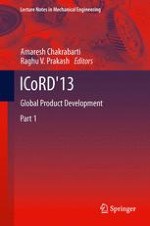2013 | OriginalPaper | Chapter
Modeling of Human Hand Force Based Tasks Using Fitts’s Law
Authors : M. S. Raghu Prasad, Sunny Purswani, M. Manivannan
Published in: ICoRD'13
Publisher: Springer India
Activate our intelligent search to find suitable subject content or patents.
Select sections of text to find matching patents with Artificial Intelligence. powered by
Select sections of text to find additional relevant content using AI-assisted search. powered by
